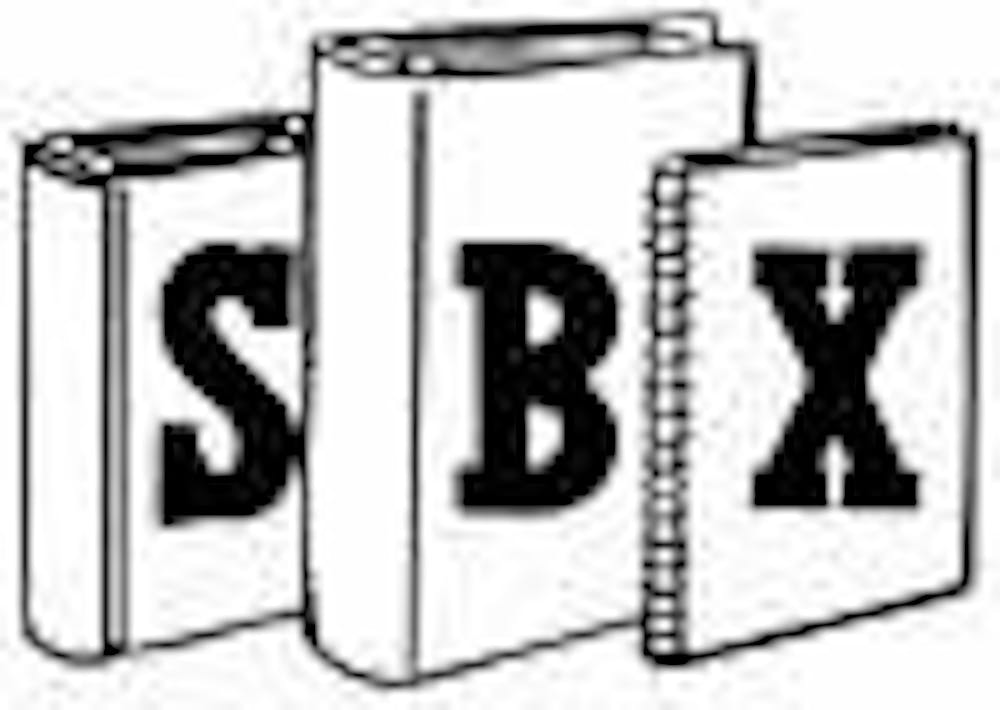A labor of love: Setting the record straight on teacher-written books
 If there’s one thing they can agree on, some students and professors believe the process of picking, choosing and buying textbooks can be a pain.
If there’s one thing they can agree on, some students and professors believe the process of picking, choosing and buying textbooks can be a pain.
Just ask Peter Orlik, an electronic media writing and criticism professor, who says the experience is just as challenging for professors as it is students when it comes time to choose a required text.
That’s why Orlik writes his own textbooks.
“After you’ve taught a class for a number of years, you kind of know the key things that you want to establish and the things that you want to hit,” he said. “If you write your own, since you know how you want to scope the course, you can pull all of that together so it’s much more efficient.”
Orlik, who has four textbooks on the market and has penned others in the past, decided to write his first textbook in 1978 after hearing students tell him his lectures were better than the textbook’s lessons.
“Particularly, if writing is one of your teaching areas, you should be able to pull together a textbook that communicates key things that you want for your students,” Orlik said. “The textbook should be a launch pad for discussion. If you write your own, it’s easier to utilize that launch pad than if you were trying to use someone else’s.”
Chemistry professor Bradley Fahlman is another instructor who wrote his own textbook for classes, and said it brings an energy to the class not had by standard issue textbooks.
It also lets him know if the students are actually doing their work.
“I’ll obviously know if they are reading the textbook or not,” Fahlman said. “They think it’s a really cool experience to have a class from the professor that wrote the textbook.”
Both men’s books have gained traction, not just at CMU, but domestically and internationally.
The second edition of Fahlman’s textbook, "Materials Chemistry," is currently used at universities throughout Europe, as well as the U.S., including Stanford and Yale.
Orlik’s books are sold and used around the world, including Australia, the United Kingdom and Canada. Recently one of his works was translated into Korean.
Professor royalties at CMU
Orlik receives a royalty for books sold outside of CMU. However, when a book is purchased by a student for one of his classes here, the royalty he would normally receive for the sold book is donated back to the university due to CMU’s Intellectual Property Rights Act Policy.
Under section IX.A.2 of the policy, it is established that professors are not able to keep the royalties from the sales of their textbooks to students at CMU if the textbook is part of the required materials for the professor’s class, or if the professor had a hand in designating his textbook as required material for students at CMU.
Professors are then required to pay back their royalties made from CMU sales to their dean’s office, according to section IX.A.3 of the aforementioned policy.
The collected monies are then used in different ways to provide funding for other research and creative projects at CMU.
“I think this is a fair policy to avoid any possibility of a conflict of interest,” Orlik said. “As long as it applies only to new copies, due to the statutory doctrine of ‘the first sale’, I have no problem with it.”
However, Orlik said he has a major problem with the soliciting of professors by “used book” firms in an attempt to get professors to sell back examination copies – those that professors receive for free and the author had not gained royalties for.
“They then sell these (examination copies) to students and the author has received nothing,” he said. “This deprives the author of any monetary compensation for that book.”
According to Orlik, the university has done very little to prevent that practice by third parties.
“The practice drives up the costs of textbooks for everyone as the publisher has to recoup these lost revenues by raising the price for everyone else,” he said.
While professors have to relinquish royalties to the university, the publishers keeps their share from the sale, which is already the majority due to providing the textbook’s overhead and marketing costs.
“(The) publisher still keeps their portion, which is usually 80 to 90 percent of net, depending on (the) contract the author has negotiated,” Orlik said. “So, the author gets 10-20 percent. Often this is on a sliding scale – once a book sells above a certain number of total copies, (the) author’s share goes up.”
For the two, producing the book is a labor of love with a focus on hitting all the right beats of a course.




